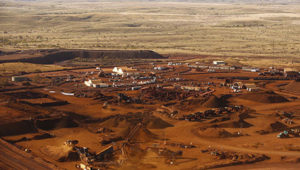
The market’s predicted compound annual growth rate is 5.15 per cent from 2016 to 2020.
Posted October 17, 2016 | By Lewis Dyson • Journalist
The output of the global construction aggregates market is predicted to increase more than five per cent over the next four years, according to a market research report.
The study, Global Construction Aggregates Market – Key Trends and Opportunities to 2020 published by Timetric, concluded the global construction industry had been “relatively sluggish” since 2015, reflecting a slowdown in the pace of expansion in China and weakness in key emerging markets.
This slow rate of growth in aggregates was expected to continue into the rest of 2016; however, the report forecasted the construction industry would start gathering pace gain from next year.
The global construction aggregates market would post a compound annual growth rate (CAGR) of 5.15 per cent over the period 2016 to 2020, it predicted.
“This increase will be a result of government investment in public infrastructure and positive developments in regional and global economic conditions,” a Timetric company statement read.
Although the global value of the market fell in 2015 in nominal US dollar terms, the report found it registered a CAGR of 0.95 per cent between 2011 and 2015.
Asia-Pacific was the largest regional market for aggregates last year, accounting for 47.9 per cent of the global market. It was followed by North America and Europe with respective shares of 21.5 per cent and 18 per cent.
The statement also noted: “Improvements in the global demand for aggregates over the forecast period are in line with the positive projections for construction industry growth, with the key drivers being investment in infrastructure and residential construction in emerging economies, and anticipated recovery in regional and global economic conditions.”
The US and China
According to Timetric, the US would retain its position as the second largest market by 2020 and the prospects of the US construction industry were good due to a need to upgrade the country’s ageing infrastructure.
Despite the weakening of demand in China over the past couple of years, the country remained a “sizeable market”, accounting for 32.9 per cent of the global market in 2015.
“The infrastructure construction market will be supported by government investments under the 13th five-year plan (2016-2020), through which the government plans to invest CNY3.8 trillion ($AUD710 billion) in new rail projects and CNY1.7 trillion (AUD361 billion) in road infrastructure by 2020,” it stated.
The report’s findings about China correlate with a recent report by the Global Aggregates Information Network (GAIN) – a coalition of the major international aggregates associations across the world.
As previously reported by Quarry, GAIN noted China’s aggregates output in 2016 remains at the 2015 level of 15 billion tonnes; however, the 13th five-year economic development programme requiring major further investment in infrastructure meant the sector’s future looked bright for the next 15 to 20 years.
The GAIN report found in all the countries where it has a presence, aggregate production tonnages were either stable or increasing, which bodes well for the industry as a whole.



















